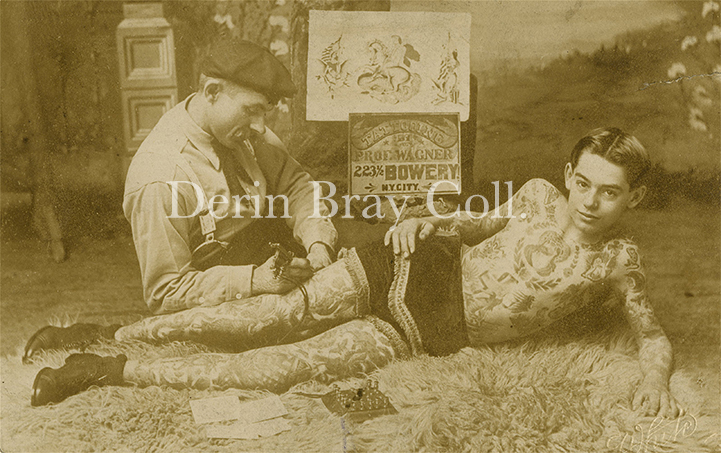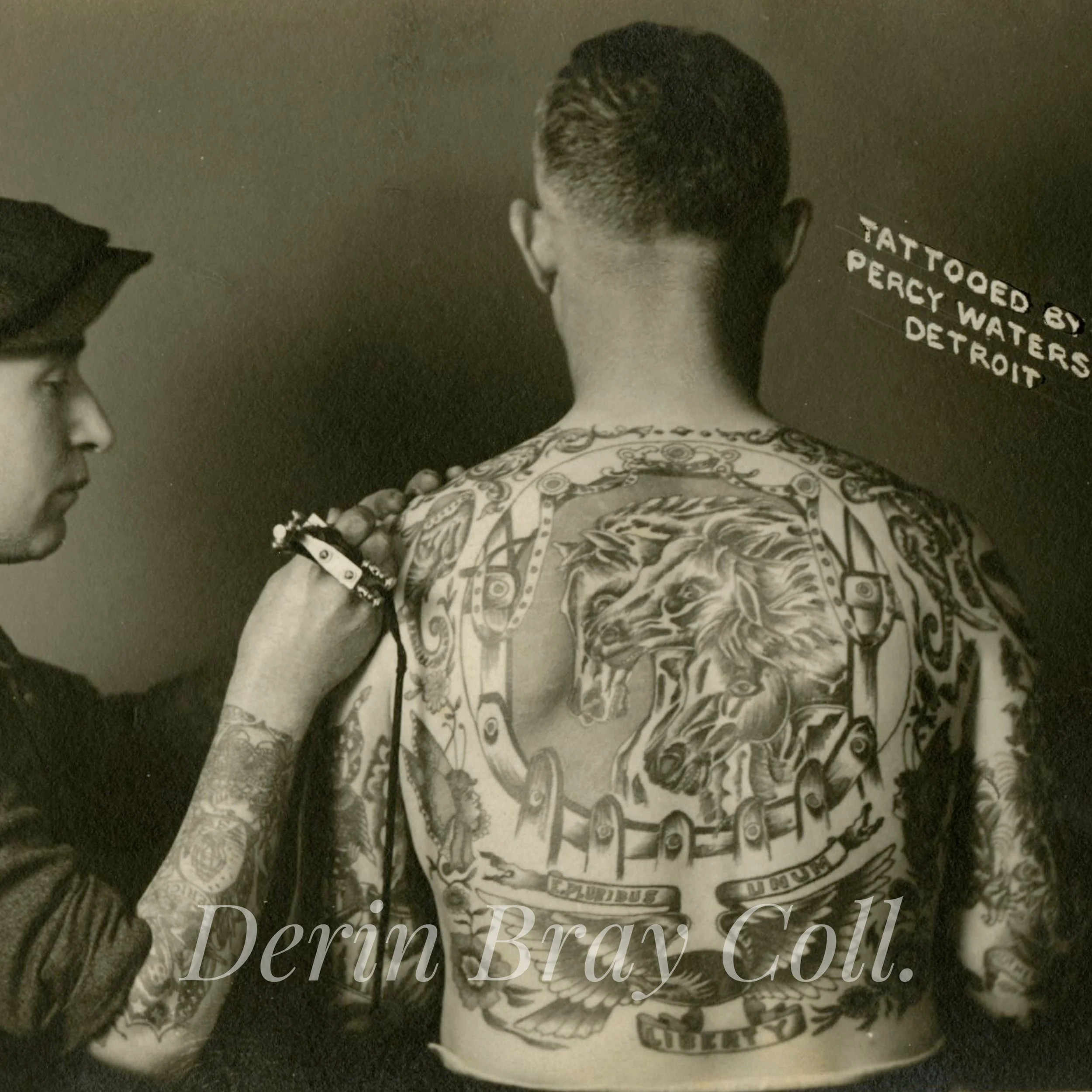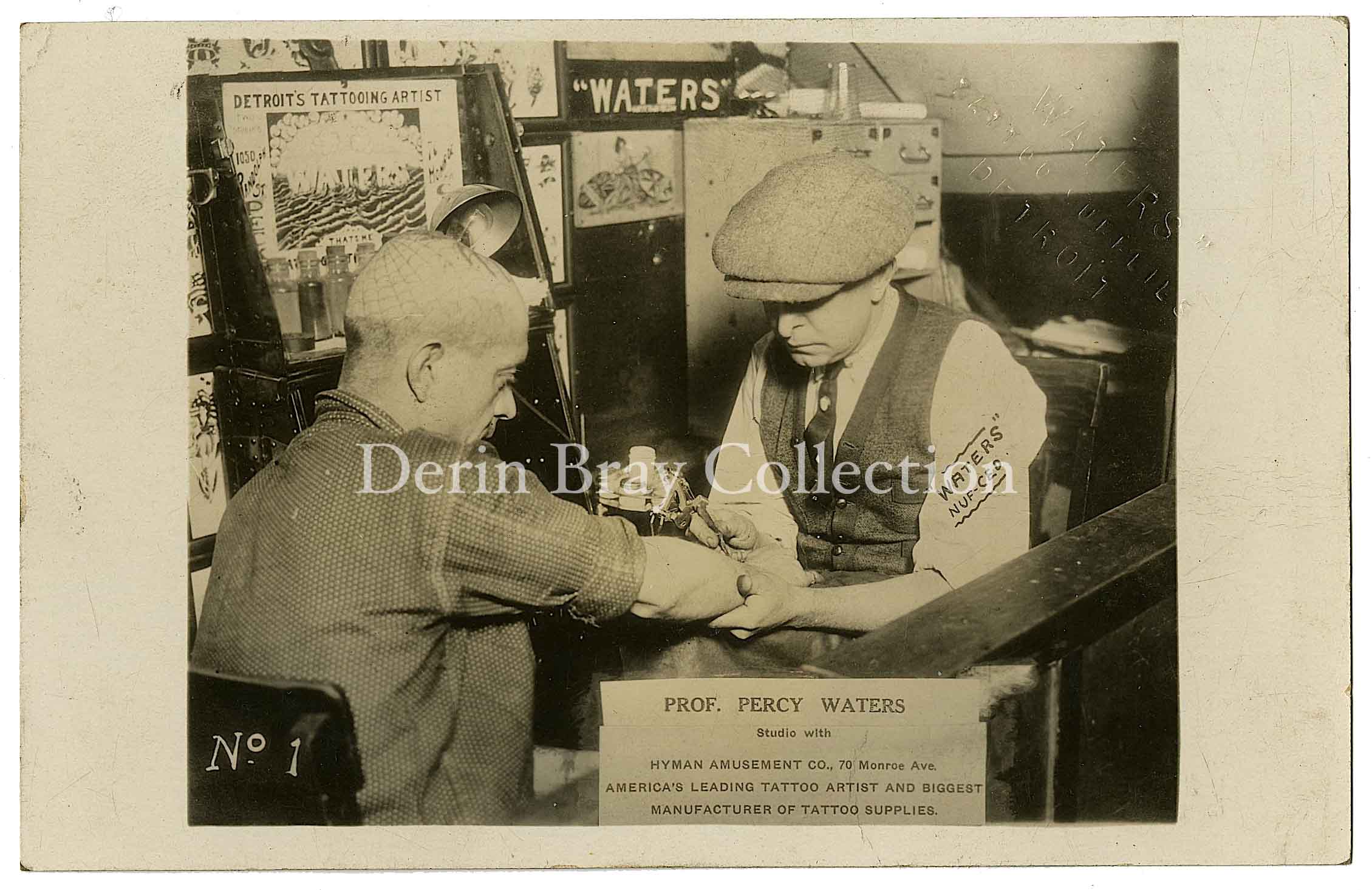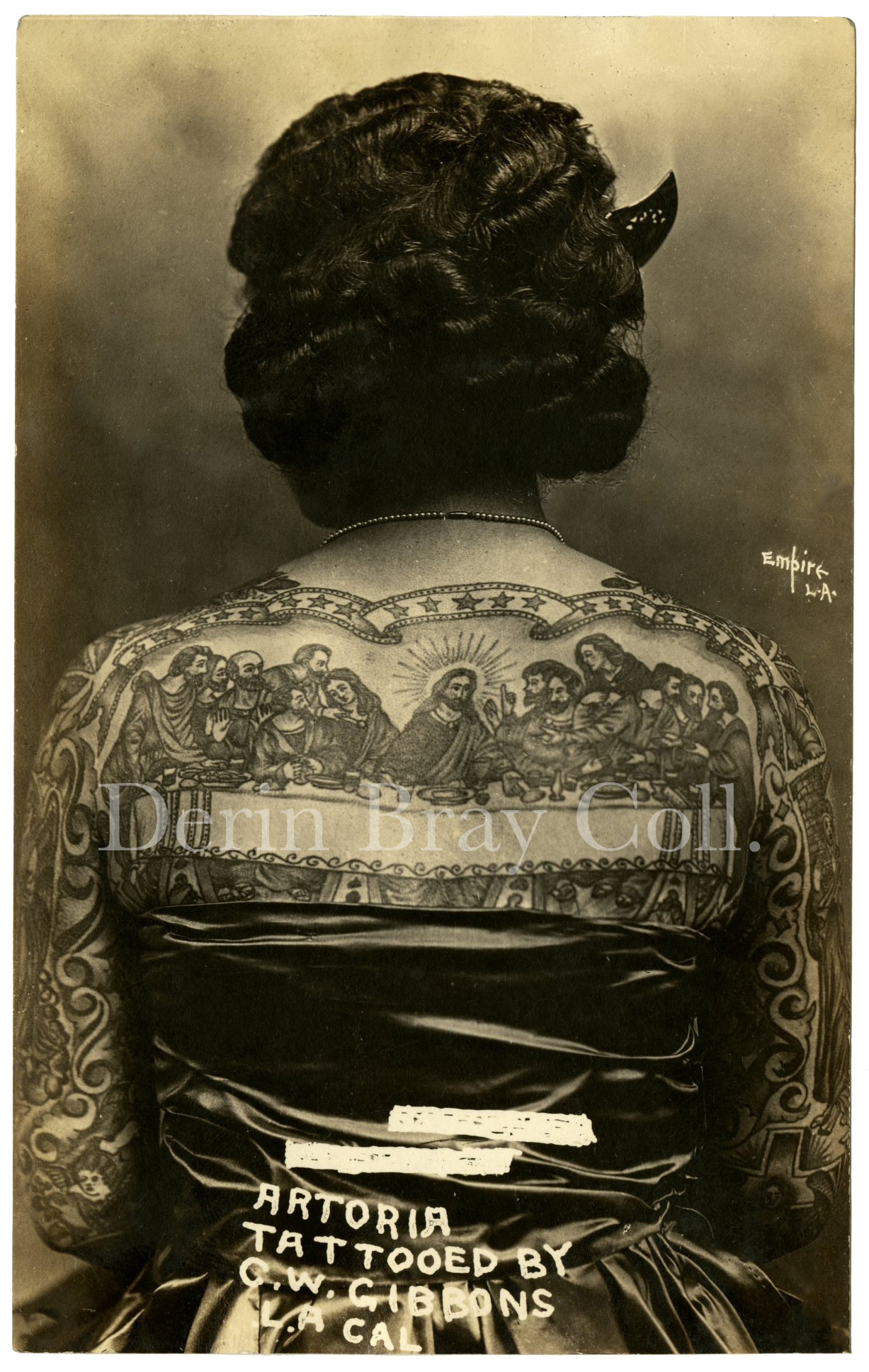A tattoo timeline. If you have anything to add, please let me know!
1883 Nov 29 Edward Spousta is born in Chicago to Joseph Spousta and Anna Periona
1915 Dec 6 “Latest Style of designs tattooed in the Human Skin by the latest and painless process. by Prof. S. J. Edwards.” The Sheboygan Press
1915 Dec 7 “Tattoo Marks of all kinds removed by Prof. S. J. Edwards, 812 N. 8thSt.” The Sheboygan Press
1916 Jul 22 “Tattooed Wonder – at Liberty; wife can work electric chair or snakes; state best salary, with tattooing privilege; tickets. Prof. S. J. Edwards, 508 Mulberry St., Rockford, Illinois.” Billboard
1918 Jul 17 “Sheboygan Girl is Snake Charmer with Wortham-Rice Troupe / A member of the Wortham & Rice carnival troupe, now playing a week’s engagement at the ball park, is a native of Sheboygan. She is Madam Melba, who charms snakes in “Wonderland”. In private life she is Mrs. Helen Edwards, the wife of Prof. S. J. Edwards, the electric tattoo artist who is also connected with the carnival. Her maiden name was Helen Draeger. She formerly lived with her parents, Mr. and Mrs. Herman Draeger, at 323 Superior Ave. This is her fifth year of professional life, she having left Sheboygan to join a circus troupe in 1913. Madam Melba is very enthusiastic about her work, and says she prefers it to anything else she has ever done. She claims that she is the only girl in the country showing professionally, who handles snakes with their poison fangs in; the three rattle snakes now with her have their full equipment of death dealing fangs, as she demonstrated to a Press representative last night. The usual number of snakes in her outfit is about 150, although this spring she had in training 300. At present only a few reptiles are with her here, but she expects the others to be shipped here in a day or two.” The Sheboygan Press
1918 Aug 5 Spousta enlisted in the Navy
1918 Aug 8 “With Liberty Tattooed Man in Navy, Patriotism is at Least Skin Deep, By Frank L. Lyons. The Liberty Tattooed Man, who is believed to have more tattoo marks on his body than any other man in the world, is now a Great Lakes bluejacket. Edward Spousta, known in circus life as the human moving picture enlisted at the Great Lakes Recruiting office Monday and will report for duty today. Spousta has 365 separate designs on his body, ranging from enormous designs nearly a foot square to some that are about an inch square. There is hardly an inch of epidermis on the new recruit which has not some design indelibly stamped on it in brilliant blue, red, yellow and green inks. / “Spirit of ’76 on Chest. The Liberty tattooed man gets his name from the fact that most of his designs are of a patriotic nature. A huge reproduction of the “Spirit of 1776” is tattooed across his chest. The Statue of Liberty…Spousta said that the majority of the designs had been placed on his body by himself or reworked from other artists’ designs. The remainder of the work not done by himself and cost him nearly $500. He said that it was not very painful to have the big designs placed on his body. The only time it hurt a great deal was in having the Statue of Liberty made,” he said. When I was being tattooed along the spinal column, where all the nerves are, it made me wince….”
1918 Dec 4 Discharged from the Navy
1920 Jan 8 Living with Helen at 2119 Gladys Avenue in Chicago.
1920 Jun 5 “Wanted – Freaks—Wanted for Prof. S. J. Edward’s Palace of Living Wonders, with Harry E. Billick’s Gold Medal Shows…Freaks..or anything suitable for a real live and best-framed Pit Show. You know how Edwards, the Liberty Tattooed Man, can frame up an outfit. This is a 20-car show…” Billboard
1920 Jul 31 “Wanted For Prof. S. J. Edwards’ Congress of Living Wonders one good Freak to be featured; also Glass Blowers and good working attractions. Want to buy Una-Fon, Levitation, Magic, Ventriloquist, Mind Reading, Banners. This week Chillicothe, Mo.; next week Hannibal, Mo. Wire Prof. J. E. Edwards.” Billboard
1920 Oct 2 “Pit Show Attractions Wanted for Prof. S. J. Edwards’ Congress of Living Wonders, with Harry E. Billick’s Gold Medal Shows. / Fat Girl, Midget, Armless Wonder, Magician, Glass Blower or good Freak that can be featured. Also =Working Acts. This is a 20-car show. Stays out all winter. State your salary in the first wire. No time for correspondence. Wire Prof. S. J. Edwards, care Gold Medal Shows, week of Sept. 27, Fayetteville, Ark.; week of Oct. 4, Mena, Ark.” Billboard
1921 Apr 16 “Gold Medal Shows / First of the Season To play Immediate Vicinity of Kansas City / …S. J. Edwards’ Congress of Living Wonders…Helen Edwards, cartoonist…S. J. Edwards, tattooed man…” Billboard
1921 Apr 23 “S. J. Edwards” Congress of Living Wonders / A big 20-in-1 show with Harry E. Billick’s Gold Medal Shows. Those in the picture are, left to right: Harry E. Billick, S. J. Edwards and Doc George Hammond, talker (first row); Ed Bledsoe, tall boy, 8 feet, 2 inches, and 19 years old; Lucy, fat girl; Mr. Gowler, glass blower; Mrs. Gowler, to left of Ed, and then Mrs. Helen Edwards, wife of S. J. Edwards.” Billboard
1922 Apr 29 “Hansher Bros.’ Attractions Ready for Start at Milwaukee…Mr. and Mrs. B. H. Lockman and Mme. Melba, illusionists and magicians, and Mr. and Mrs. S. J. Edwards, he being a tattooed man and glass blower and she a chalk-talk cartoonist…” Billboard
1923 Apr 14 “Call / Great White Way Shows / Show Opens Hammond, Ind., April 23…Pit Show Attractions for 15-1, write to S. J. Edwards…” Billboard.
1924 Jun 7 “Great Middle West Shows…”The shows; Circus side-show, S. J. Edwards, manager and announcer…Mrs. Helen Edwards, comic cartoon and chalk talk… Sailor Jack Edwards, tattooed man…” Billboard
1926 Jun 5 “Michigan Greater Shows, R. T. Wade, O. A. Baker….S. J. Edwards, can use you…” Billboard
1927 Apr 30 “Lou Delmore in Chicago / Chicago, April 20 – Lou Delmore, side-show manager, is in Chicago with the Sells-Floto Circus, acting as an announcer…Jack Orr, Tattooed Man…Princess Melba with her collection of snakes…” Billboard
1927 May 7 “Snapp Bros.’ Shows…”Mrs. Edwards the wife of our midway artist, S. J. Edwards, has arrived. She is a rag picture worker and a cartoonist appearing under the name of Artista…” Billboard
1931 Jan 17 “Among Showfolks in Chicago busily preparing for the new season are S. J. Edwards, tattooed man, and his wife, Helen, who bills herself as Artista. S. J. is making everything new, including flash, and the missus, in conjunctions with her chalk talks and rag pictures, will have a glass-blowing outfit, and is now busy making up stock for that attraction.” Billboard
1971 Jul 16 Edward J Spousta dies
1971 Jul 17 “Spousta / Edward J. Spousta, age 88, beloved husband of Helen. Services Monday, 1 p.m., at Krauspe Chapel, 3905-07 N. Lincoln Av., Interment Acacia Park. Member of Paul Revere Lodge, No. 998, A. F. & A. M., ILL Commandery, NO. 72, K. T., Columbia Chapter, NO. 202, R. A. M., Legion of Merit of Medinah Temple and Trowel Post, No. 160, A. L., 525-0529.” Chicago Tribune
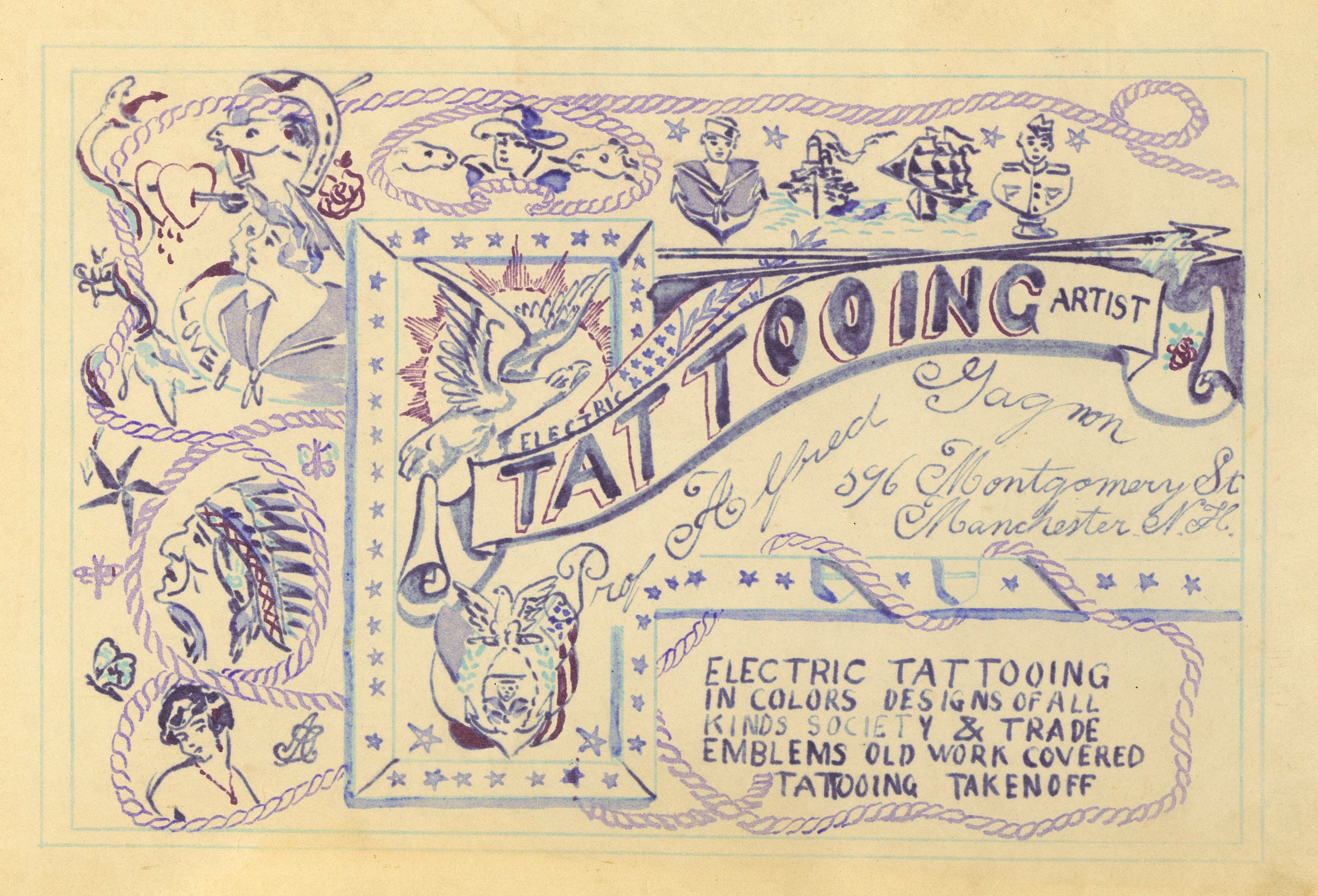









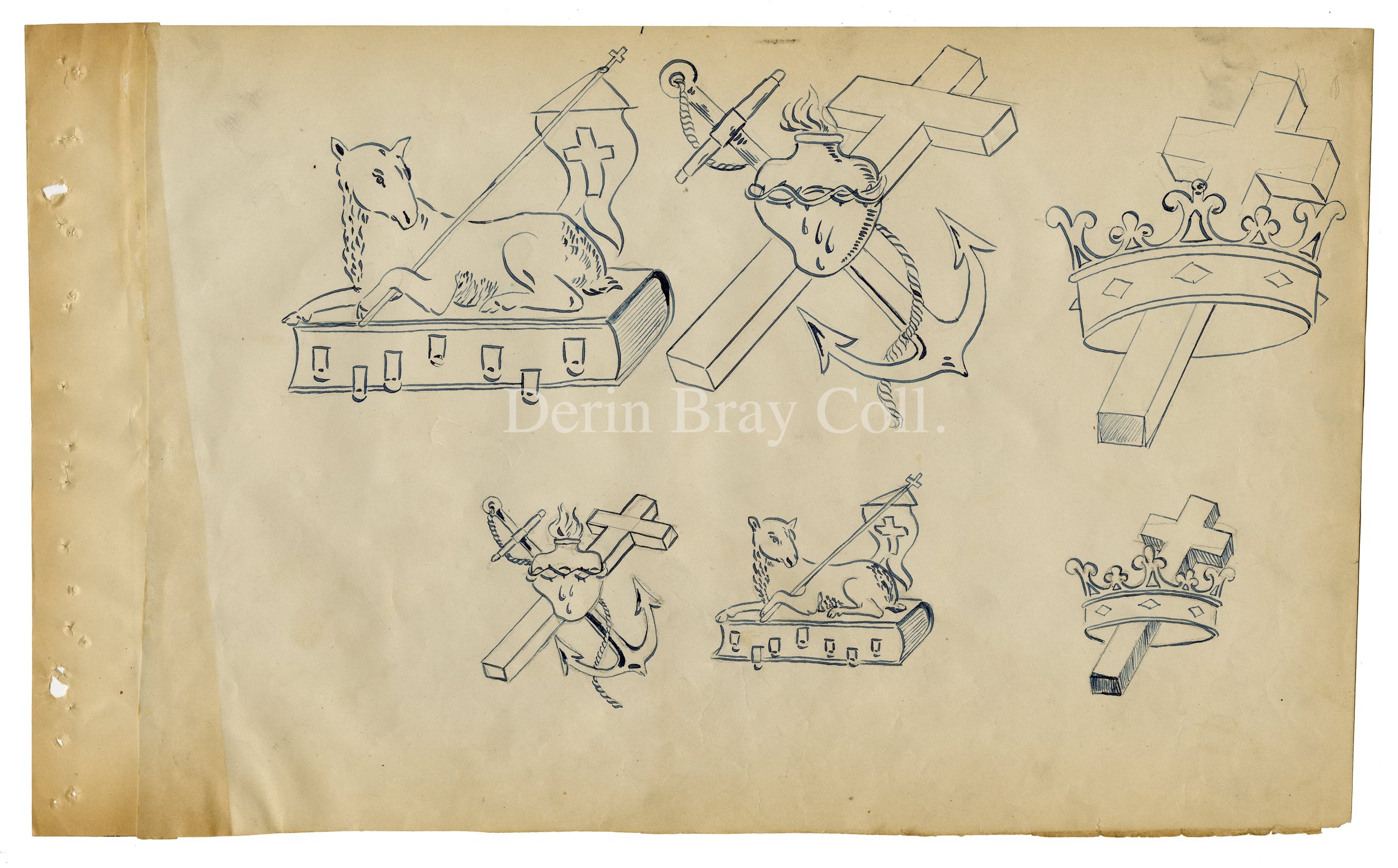


























![Lew Alberts and One of His Tattooed Attractions, Possibly Harry Lawson. L) “Tattooed by Lew Alberts, Pittsburg[h] Pa.,” Detail of a Real Photo Postcard (RPPC) Duplicated From a Cabinet Card Photograph by William Ettlin. R) Tattooed by Lew Alberts, P…](https://images.squarespace-cdn.com/content/v1/59f1e5b964b05f07bd46fccf/1547154152082-G6K5ZG4FO4TXSICPZ1F9/tattooed+by+lew+alberts%2C+pittsburgh+pa+ettlin+cabinet+card+photograph+real+photo+postcard+rppc+tattoo+tattooing+artist+11+chatham+square+pittsburgh+new+york+bowery+antique+vintage+collectible)
![L) Ed Greenwood, Tattooed by Charlie Wagner and Lew Alberts, Cabinet Card Photograph by William Ettlin, Ettlin’s Portraits, 17 Chatham Square, New York, ca. 1903. Harry Ransom Center, The University of Texas at Austin. R) “Tat[t]ooed by Prof. Wagner…](https://images.squarespace-cdn.com/content/v1/59f1e5b964b05f07bd46fccf/1547234432439-KQOY4RJPFDILN52Q0Q8A/greenwood+charlie+wagner+bowery+tattooed+side+show+cabinet+card+ettlin+17+chatham+square+photograph+obermuller+and+Son+28+cooper+square+new+york+antique+vintage+collectible)


